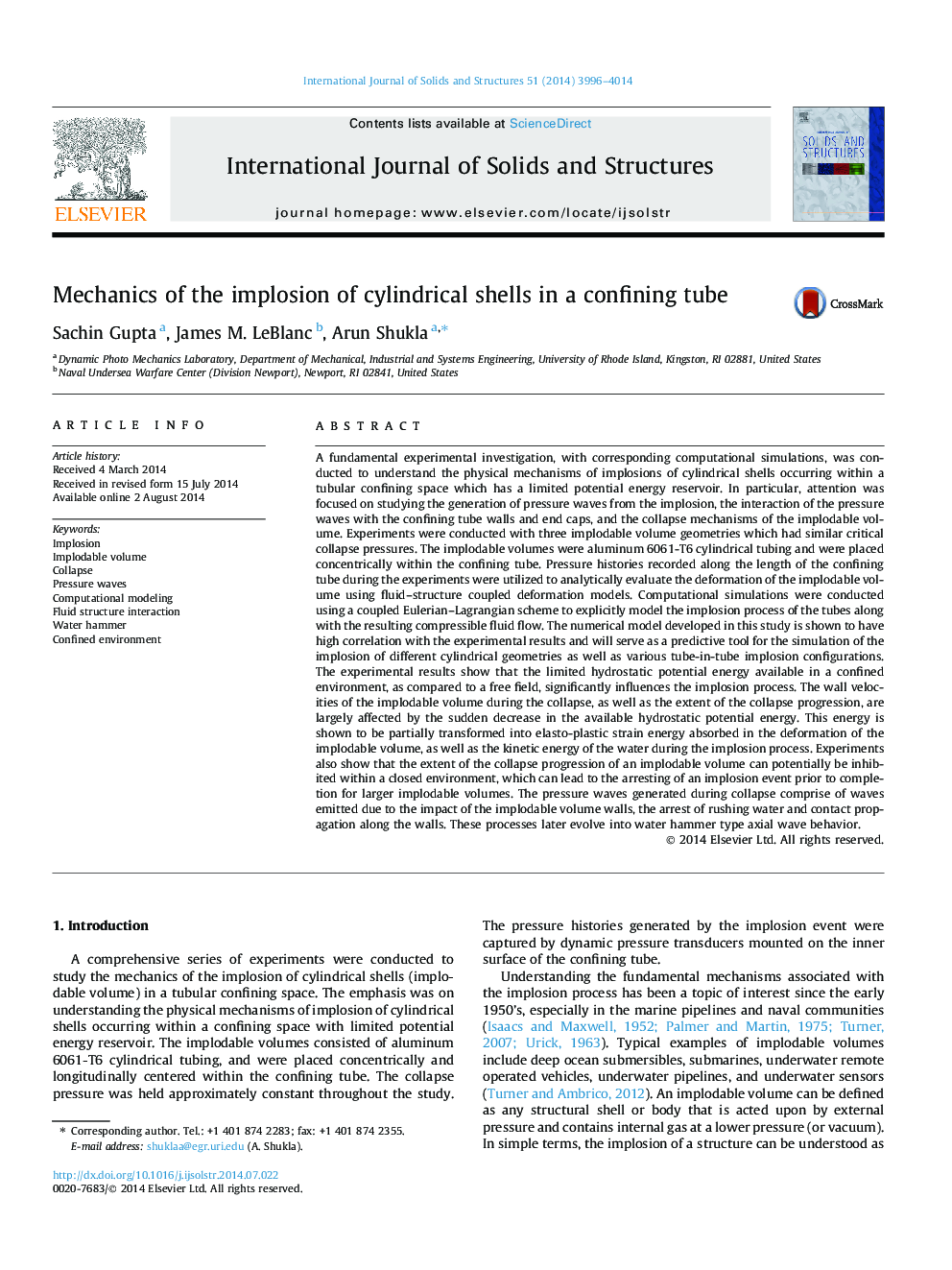| کد مقاله | کد نشریه | سال انتشار | مقاله انگلیسی | نسخه تمام متن |
|---|---|---|---|---|
| 277546 | 1430232 | 2014 | 19 صفحه PDF | دانلود رایگان |
A fundamental experimental investigation, with corresponding computational simulations, was conducted to understand the physical mechanisms of implosions of cylindrical shells occurring within a tubular confining space which has a limited potential energy reservoir. In particular, attention was focused on studying the generation of pressure waves from the implosion, the interaction of the pressure waves with the confining tube walls and end caps, and the collapse mechanisms of the implodable volume. Experiments were conducted with three implodable volume geometries which had similar critical collapse pressures. The implodable volumes were aluminum 6061-T6 cylindrical tubing and were placed concentrically within the confining tube. Pressure histories recorded along the length of the confining tube during the experiments were utilized to analytically evaluate the deformation of the implodable volume using fluid–structure coupled deformation models. Computational simulations were conducted using a coupled Eulerian–Lagrangian scheme to explicitly model the implosion process of the tubes along with the resulting compressible fluid flow. The numerical model developed in this study is shown to have high correlation with the experimental results and will serve as a predictive tool for the simulation of the implosion of different cylindrical geometries as well as various tube-in-tube implosion configurations. The experimental results show that the limited hydrostatic potential energy available in a confined environment, as compared to a free field, significantly influences the implosion process. The wall velocities of the implodable volume during the collapse, as well as the extent of the collapse progression, are largely affected by the sudden decrease in the available hydrostatic potential energy. This energy is shown to be partially transformed into elasto-plastic strain energy absorbed in the deformation of the implodable volume, as well as the kinetic energy of the water during the implosion process. Experiments also show that the extent of the collapse progression of an implodable volume can potentially be inhibited within a closed environment, which can lead to the arresting of an implosion event prior to completion for larger implodable volumes. The pressure waves generated during collapse comprise of waves emitted due to the impact of the implodable volume walls, the arrest of rushing water and contact propagation along the walls. These processes later evolve into water hammer type axial wave behavior.
Journal: International Journal of Solids and Structures - Volume 51, Issues 23–24, November 2014, Pages 3996–4014
